Pernille Ripp's Blog, page 69
September 28, 2015
Some Helpful Realizations for More Meaningful Assessments
I have been trying to create more meaningful assessment for the past 5 years. Not a small feat if you would, especially now when I am teaching more than 120 students. Yet, a few things I have realized over the years may help others as they try to move away from grades as an end point, and instead move into better assessment and feedback, where students actually feel like they are in charge of their own learning journey.
Let me preface that this move from giving grades to giving feedback has not always been easy. I find it is much easier to simply assign a grade to something, yet it has definitely been worth it. By the end of the year my students are much better at evaluating, reflecting, and goal setting than they are when we start. And that is worth it all in itself. So a few things that I had to realize to make this shift was…
I am not the only one assessing. Students self-assess on almost every assignment once we get started. This is important, because they should not always be looking to me for how they did. They need to know themselves well enough to reflect on their own performance.
It is an ongoing conversation. We take the time to deconstruct the standards and rewrite them in student language. We take the time to go through what an assignment is actually asking them to do. We take the time to plan together so students can get ownership over what they are doing. Assessment is not something that only happens once in a while so it should not just be discussed once in a while.
I cannot assume. Too often we assume as teachers that we know what a child is doing or thinking. It is not accurate most of the time. So instead, I ask a child what they meant, I ask them to explain it to me as if I was not in the room. I ask them to make sure that I can understand their thinking at all times. We seem to focus too much on brevity, I would rather have a child be able to explain the full extent of their thinking than assume I know what they mean.
They need to produce more than I can assess. Our job is not to assess every single thing that a child produces, but instead to assess the pieces they feel are worth others looking at. Asking students to evaluate their work and only submit the one piece from a unit that they feel will show off their knowledge the best? That is an assessment in itself.
They need to assess each other, but not until they trust each other. We love using students as peer editors, as peer reviewers, and even as peer assessors. However this can be incredibly hard for students who do not trust one another. So wait. Let them build community first. Let them choose the people who will see their work. Do not force them into vulnerability, it is not worth it in the end.
Assessment needs to happen in class. They need to take ownership of the whole process, not just the end result, so that means that we are constantly evaluating our work, we are constantly engaged with our work, and we are doing it in class, not at home, not with parents. But here, now, this day, so that the conversations can happen as a group, as a partnership and as a self-reflection. And so the conversation can mean something and not just be homework or something else to get through.
Finally, assessment is a point in the journey, not the end of the journey. And students don’t often understand that. We have to have these conversations with them in order to change their mindset. If students think that grades are something being done to them, that grades are out of their control and do not happen until the end when it is too late to do anything about it, then we are missing the whole point of assessment. Assessment is for bettering yourself, for deepening your understanding, for helping you set goals. Not for completing something so you can cross it off the to-do list. Once again, I am reminded of the saying; We do not teach standards, we teach kids. And that is painfully apparent in the way we use assessment, feedback, and grades in our classrooms.
PS: For the how-to for eliminating or limiting grades, please consider reading my book Passionate Learners. There is a whole chapter dedicated to not just the why, but the actual how.
Filed under: aha moment, assessment, Be the change, feedback, grades


September 27, 2015
On Reading Identity – An Essential Question to Ask Our Students
I have been watching my students carefully the last few weeks, waiting, holding my tongue, and just seeing what happens. We have started every day with 10 minutes of independent reading, which yes, sometimes is so hard to give because I feel the pressure of what I have to cover bear down on me. And yet, I know that giving my students independent reading time, particularly in the middle school, will make the biggest difference between whether they are readers or not.
So I have watched, and I have noticed the child that has already read 5 books on his device. Absorbed, enthralled, and recommending books to me. The child that is still re-reading the same old books that he has re-read the last few years, afraid to take a chance on something new. There is the child that has asked me if she could please listen to the next book and will that count as reading? (The answer is yes, of course). And then there is the girl that has been sharing her truth with me in small casual comments; she hates reading, always has. Reading was fun in kindergarten when she had to listen but that was it. She says it likes it’s no big deal. Like it is fact. Reading is not for her and never will be. So I tell her I will try to make reading better and she answers “That’s what they all say, Mrs Ripp.”
That’s what they all say.
Every teacher who has had her has told her the same thing; I will help, I will make it better, I will try. And yet, she stands before me now confessing that reading makes no sense to her. That even when she has pictures it makes no sense. And it doesn’t matter how many strategies she tries, it’s too hard and she will just read whatever,just so she can get through it. Because getting through reading is the only thing she knows how to do. Even though she has support. Even though she has teachers who care. And So I ask more questions, trying to discover just who she is, and what her reading identity means to her.
So often, we feel the pressure to teach. We feel that every time we speak to a student we must offer them up a kernel of truth, some inspiration, and a thing to try. We do it so that reading can become better for them, so they can comprehend deeper, understand it more, and develop their skills. Yet, in slowing down these past few weeks, I have learned yet another lesson when it comes to our readers; We cannot teach them well if we do not know their reading identities. And sure, that comes through speaking with them, but it also comes through quiet observation and casual conversations.
The students know what we want to hear. They will not tell us their truths until they trust us. So I withhold my judgment, reel back my eagerness to fix, and I pay attention, and I listen. Our students speak so loudly, yet we often forget to hear it.
So as they read or not read, depending on their choice, I sit next to them and ask quietly; “Are you a reader?” They are often surprised at the question, yet how they answer it tell me so much. I thank them and I move on. I take notes on my reader profile sheet and I ponder what the next step should be. How this year will help them and not hurt them.
We are not yet ready to talk strategies. We are not yet ready to talk goals, other than finding great books. We are not ready to analyze text, break it apart, or even compare. Not as a class any way. But we are ready to share our truths. They are ready to declare whether reading is for them or not. And I am ready to listen. Are you?
If you like what you read here, consider reading my book Passionate Learners – How to Engage and Empower Your Students. The 2nd edition and actual book-book (not just e-book!) just came out!
Filed under: books, Literacy, Passion, Reading, student voice


September 24, 2015
On Public Shaming and Our Classrooms
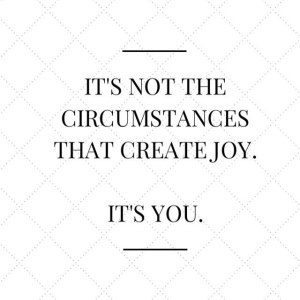 image from icanread
image from icanreadI used to yell students’ names across the classroom, making sure that everyone knew who was now in trouble. I had the teacher voice down coupled with the stern glance.
I used to have students write their names on the board when they messed up. That name served as a public reminder of their poor decisions all day and showed them that I meant business. It was a wonderful display of who could not figure out how to behave well.
I used to have students call their parents in the middle of class to tell them when they were having a bad day. Three strikes you are out was the way we worked. I figured it didn’t matter that the rest of the class could hear their call, after all, that would probably just act as a deterrent for the rest of them.
I did not think I was shaming children, after all, children thrive on rules and routines. Therefore, these rules were definitely helping them become better citizens of our school.
After a year, the names on the board did not seem to work so well, so I switched to sticks in a cup. Everyone started in the green cup, your poor decisions moved you to yellow or red. The sticks never moved backwards and we reset at the end of the day. The names were no longer on the board, but the stick moving, that happened in front of the class. That walk of shame where all eyes were on a child as they were told to “Move their stick” was a daily occurrence. In our classroom everyone knew who the “bad kids” were, and so did their parents, after all, students love to share stories about how so and so got in trouble that day.
Then my firstborn got a little older. She got a little more energy. She wasn’t that good at sitting still or even paying attention at times. She had so much to do and so many things to see. And in her, I quickly saw the future. If she got a teacher that used these systems of public shaming, she would be the kid that would move her stick. She would be the kid whose name would be on the board. And I would be that parent, wondering why my child was being publicly shamed for behaviors she was trying so hard to control. For things that she did not do to intentionally harm the instruction, but simply needed support to work through.
So I stopped. I threw it all out. It turns out that you can have classrooms that thrive without the shaming from public punishment. That you can have well-functioning classrooms without the public behavior charts. That students will try to correct behavior and set goals with you when you remove the element of shame and try to problem solve instead. That they will see you as an ally, rather than just a punisher, and that will get you much further when you try to help them become better human beings.
There are only a few things I am willing to fall on the sword for on this blog. Previous experiences have shown me that most ideas in education are not black and white. There are always more than 2 sides to every story, and every teacher teaches differently, and that does not mean they are not good teachers, it just means they are different. But today, I will make an exception.
The public shaming that happens to students in our schools has to stop. The reliance on public displays of punishement as a way to control behavior has to stop. And the first place we stop it is by getting rid of public behavior charts. Those clip systems that tell the whole world something that should be a private conversation between a teacher, a student, and the parents.
Whether it is a clip-system, the move-your-stick, the flip-your-card, or and yes I used most of them myself, we have to find a better way. We have to try because we are creating schools where children hate coming. Where parents worry that their child will be singled out for having energy, for being excited, for not being able to sit still all day. Where teachers are forced into roles as enforcers rather than nurturers. I know that there needs to be consequences. I know that we have to help students navigate behavior in our classrooms, but there are better ways then asking a child to create a permanent reminder and public display of how they are having a very bad day.
I am not proud of the mistakes I have made as a teacher. I am not proud of the things I have tried that have hurt children rather than helped them. But I am willing to write about it in the hopes that it will start a dialogue. That perhaps someone, somewhere, will take a moment to rethink something that seems to be so ingrained in our classrooms. That perhaps this post will help someone wonder what they can do instead. Because there is so much that can be done instead, there are so many ways to build community, to build better relationships, to still have consequences, and create classrooms where kids have a chance at thriving. All kids, not just the ones that know how to behave. But we have to take the first step. We have to take down the charts, remove the cups, erase the names. We have to create classrooms that do not run on shame, but run on community. I speak not just from my teacher heart, but from that of a parent. Our children deserve better than this. And it starts with us. Even if it makes us nervous. Even if we are not sure of what to do instead. I will help. Just ask.
If you like what you read here, consider reading my book Passionate Learners – How to Engage and Empower Your Students. The 2nd edition and actual book-book (not just e-book!) just came out!
Filed under: Be the change, being me, punishment


September 22, 2015
Do We Forget What We Are Asking Students to Do All Day?
Yesterday I was in Michigan, surrounded by passionate educators, trying to make a change in the way they teach. I was lucky enough to give the keynote at Googlefest and after I was done speaking, my job was to listen. And so I did. With every inch of me I listened to their stories, tried to answer their questions, and soak in the knowledge that I was being given. What a gift it was.
It was exhausting.
By the time I reached the airport, my brain called out for sleep and food. No more computers. No more work. By the time I sat down, I couldn’t fathom doing anything productive although my to-do list screamed out for attention. My brain was full. My brain was so tired. And there was nothing I could do to trick it into thinking anything smart or productive. Thank goodness I did not have a looming deadline. So that’s when it struck me…
This is what happens to our students every single day.
We ask them to give us their full attention. For them to be on high alert all day as they learn. Ask any student and they will tell you they mostly listen throughout the day, interjecting knowledge throughout, yet their brain is constantly processing. Constantly working to make sure they are fulfilling what we demand students do: pay attention, be ready, learn. And be ready to prove it to us, no slacking allowed, whenever we feel like calling on them.
As adults we forget how tiring that must be. How not only are they asked to pay attention, but they are also asked to sit still, take notes, and be ready to answer any question we throw their way. We expect them to care about what we are doing and give us their very best, every minute, every day.
So today as I plan for the learning to come, I cannot help but think of how I need to make sure my students are moving. How I need to make sure they are talking and discussing. How I need to make sure we are doing something with the knowledge that we are working with, so they are not just paying attention, not just getting more information. And how I also need to be more understanding when they tell me they are tired.
We ask so much of our students because so much was asked of us when we went to school, yet we forget how hard it can be to live up to our standards. Do you have room for students brains to take a break? Do you plan for engagement and not just listening? Do you ask the students what they need so they are not exhausted by the end of the day? No wonder, students ask us to rethink homework, when all their brain is asking for is to take a break. I hope this is a lesson I don’t forget.
If you like what you read here, consider reading my book Passionate Learners – How to Engage and Empower Your Students. The 2nd edition and actual book-book (not just e-book!) just came out!
Filed under: Be the change, being a teacher, being me, students


September 20, 2015
A Rally Cry for Our Girls (And Boys)
A woman I admire greatly, Joyce Valenza, keynoted today on female leadership. Before her keynote she asked me and other women I admire greatly to share their experiences of what it means to be a woman in education. The following is roughly what I shared in a short video clip, I thought it only best to share it here as well but written instead of spoken.
I am the mother to 4 children all under the age of six. I am the mother to 3 daughters that will one day, hopefully, become independent leaders, not afraid to speak up or speak out. But for them to become just that, our society has to change. Our classrooms need to change. Our language needs to change.
In how many classrooms are girls expected to follow the rules better? To sit still? To listen quietly? If a girl runs around, full of energy she is “acting like a boy.” If she does it on a regular basis then something must be wrong with her. If a girl raises her voice, has high energy, then she must be having a bad day. She is labeled “wild” and “unruly.” Because that is not how girls are supposed to be. It goes against their very nature.
The same goes for boys, except only opposite. If a boy is quiet, if a boy shows emotion, then something must be wrong. If a boy does not engage in rough housing he must have a problem or be a wimp. We call our boys “sensitive” like it’s a swear word.
As educators, we must see our students as full human beings that can act in whichever way they choose, even if that means not being a “good” girl every day. As mothers, we must protect our children from the language that is sure to shape their identity so that they can be what they want to be, not just the archetype of a woman that society has bestowed upon us.
We are raising the future so I raise my girls to be independent. To be brave. To be fierce. I raise my son to be proud of his emotions and to say no when he wants to. That he does not have to fit into any gender stereotype someone else has decided for him. But most of all, I raise my children to be themselves, no matter their gender. Our classrooms, our very language, should protect that.
If you like what you read here, consider reading my book Passionate Learners – How to Engage and Empower Your Students. The 2nd edition and actual book-book (not just e-book!) just came out!
Filed under: Be the change, being a teacher, being me, Passion, power


September 19, 2015
Great Picture Books to Use for Aha Moments
One of of the main texts we use to guide our reading instruction is the amazing Notice and Note: Strategies for Close Reading by Kylene Beers and Robert Probst. This book provides us with the foundation for having deeper reading conversations and a common language as we develop our thoughts. While the book has excellent text ideas to use as mentor texts, I thought it would be nice for my students to use picture books on the very first day of a new strategy before we delve into the longer text excerpts. I have therefore looked for picture books I could use with the different strategies and will publish posts as I have them for the 6 different strategies since I cannot be the only one looking for ideas.
The first post was on Contrast & Contradictions, so this week I am turning to Aha Moments. These are the books my students and I will use as we explore this concept a little further.
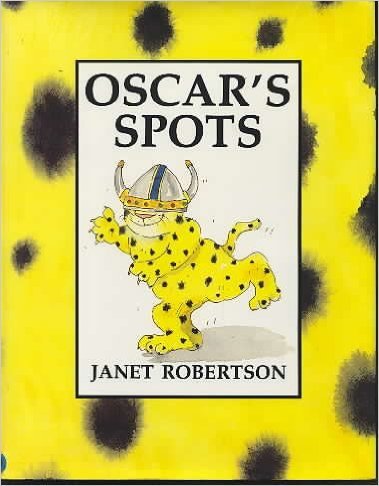
While Oscar’s Spots by Janet Robertson is more than 20 years old, I still love the copy we have in our classroom. Oscar has a pretty big moment when he realizes that maybe he doesn’t want to get rid of his spots after all.
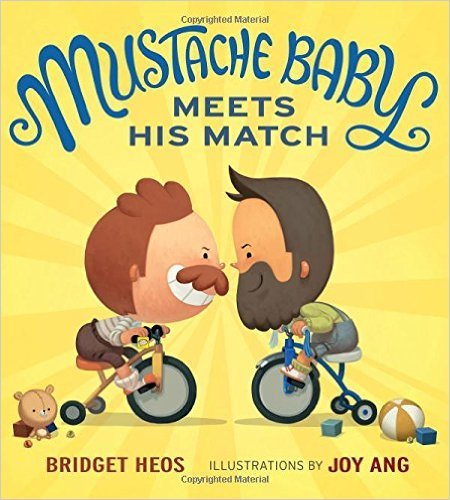
We are huge fans of Mustache Baby by Bridget Heos, and so I am thrilled that I can use its sequel Mustache Baby Meets His Match to teach Aha moments. I love how Billy changes his tune late in the book.
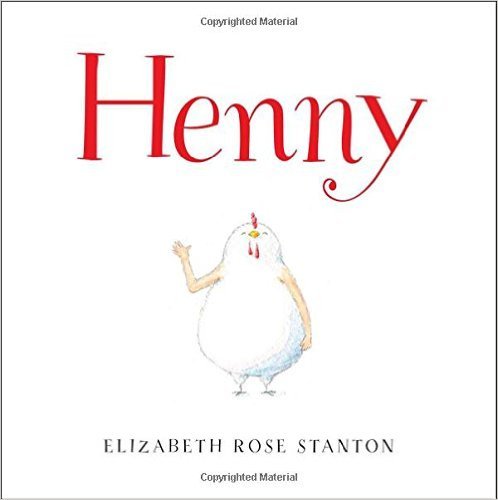
Henny by Elizabeth Rose Stanton is a quirky book and yet the aha moment cannot be denied when Henny realizes that maybe having arms is not such a bad thing after all. My students are always puzzled when they first encounter this book but then end up liking it.
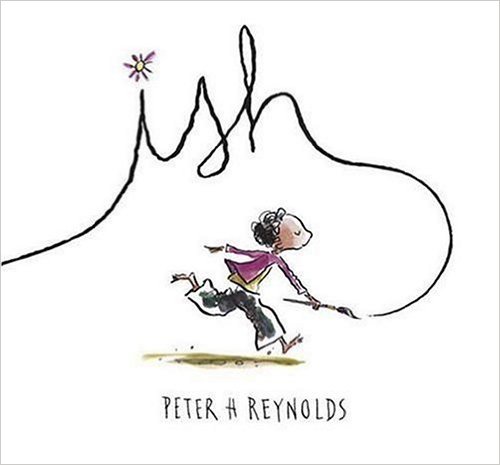
I am pretty sure I can teach all of the Notice and Note signposts with the help of Peter H. Reynolds. His beautiful book Ish is a fantastic example of aha moment and will probably be the one that I use when I teach the strategy to the class. It’s a good day when Peter’s books are read aloud.
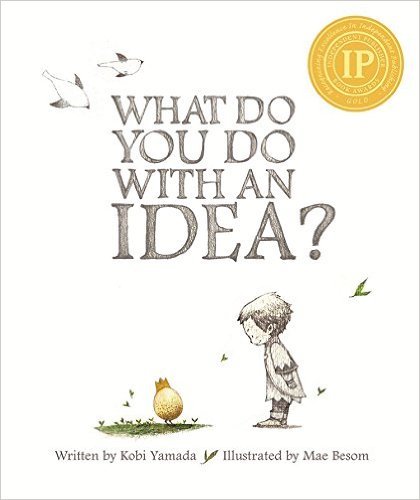
While there is no specific aha moment in What Do You Do With An Idea? by Kobi Yamada, I feel like the whole book is an aha moment. I am looking forward to the discussion that will happen around this book.

Each Kindness by Jacqueline Woodson is one of those picture books you can use for so many things; memoir, aha moment, words of the wiser, teaching empathy and such. I have used this book for so many things that it only seems natural to discuss the aha moment that Chloe has.

A Perfectly Messed Up Story by Patrick McDonnell is one of many amazing picture books from this author. I love the simple aha moment of realizing that it can be good enough even if it is not perfect. This is a great read for many of our students who push toward perfect every time to the detriment of their own sanity.
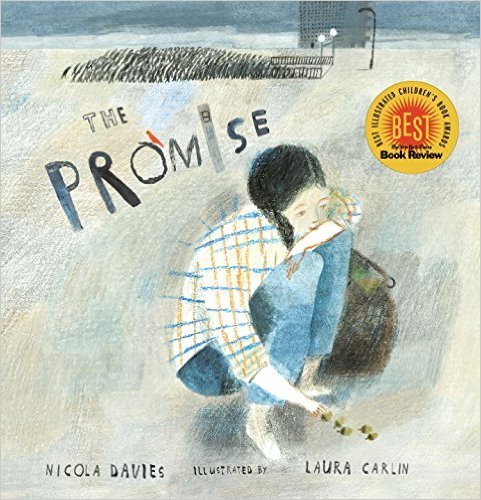
The Promise by Nicola Davies is a story meant to be discussed. I love it for its beautiful illustration, for its message, and also for its use as a mentor text. The aha moment is one that I hope students will remember and apply in their own life.
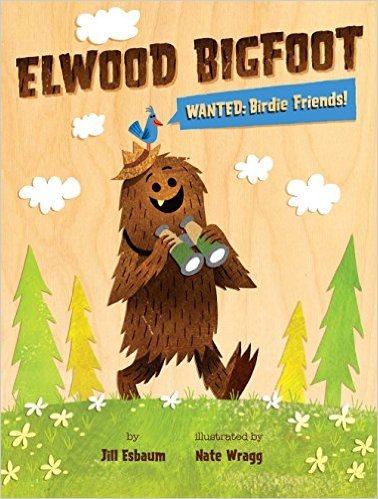
Elwood Bigfoot: Wanted Birdie Friends by Jill Esbaum is not only a great book to discuss friendship and how we must stay true to ourselves, but is great for aha moments as well. Elwood has a pretty big one and hopefully so will our students.

You Are (Not) Small by Anna Kang is a great book for those who really need direct aha moments to relate to. This one is pretty straight forward and will be a great book to have students explore by themselves as well.
I am sure there are more out there, please make sure you share.
If you like what you read here, consider reading my book Passionate Learners – How to Engage and Empower Your Students. The 2nd edition and actual book-book (not just e-book!) just came out!
Filed under: being a teacher, books, Literacy, picturebooks


September 17, 2015
A Powerful Lesson in Book Choice and Discovery
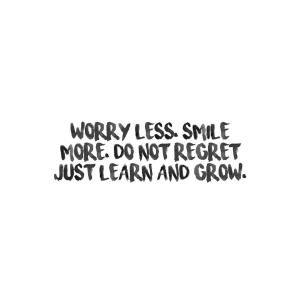 image from icanread
image from icanreadI felt so guilty this morning planning final details of my lesson. After all, we are three weeks into the quarter and there is so much to do already. Three weeks and what have we really done? And yet, the books had been piling up. I had seen the students book hopping, abandoning at a rapid pace. And I knew there were so many great books to share. If only we did not have to do these other things. If only we had the time.
So this morning, I realized that we needed to find the time. That book shopping was not a luxury I could hope to get to but instead was a necessity. And not in a hurried, five minutes at the start of class kind of way either. Not in a “let’s fit it in quick so we can get to this other thing” kind of way. No, we had the need to make book shopping THE thing to do today. No matter what else we should have been doing.
They came in and immediately saw the piles of books; my favorite reads from the summer, brand new books that I haven’t even read, and some older favorites that I know they need to discover. Right away, the questions started. “What’s this? Did you see this?” As the students grabbed their readers’ notebooks, I interrupted their conversation. “Come on over.” And they did, surrounding me in the rocking chair as I read aloud the inspiring It’s A Book by Lane Smith. I love reading this book aloud to older students because they always giggle and then look to me to see if I got it too. And I do and I giggle too, and we marvel at the wonders of simply reading a book.
I asked them how they find new books to read and we brainstormed a list together. Nothing extraordinary but a simple reminder to indulge in the art of looking for a book. To take the time to truly go through the books and not just cast a glance at the cover and then make a decision.
They were itching to go. The books calling out for them and yet, I held them back for another few minutes as I book talked a select few books in each pile. Already the students were writing down titles.
“I know Echo by Pam Munoz Ryan looks like a giant book, but the pages will fly by as you read.”
“You think that The False Prince is a good book, but then you get to page 88 and it becomes a book you have to read as quickly as you can to see what happens next. And did you know the same author wrote A Night Divided?“
“In my hand I am holding the best book I have read so far this year. Yes, Orbiting Jupiter by Gary D. Schmidt is really that good.”
Finally, I told them to take their time, that I would give them the whole class period if they wanted it. And off they went. Their papers clutched tightly and their hands reaching out for all the books.
I stood back, observed, and smiled. Everywhere students were reading pages, sharing books, offering recommendations and scribbling down titles. Questions floating through the air as students told each other why they had to read this one, or how they couldn’t wait to read this other one. One child proudly showed me they had already found 10 titles to read and they knew they would find more.
As I walked around, the students came to me and offered up book recommendations, asking me to please write it down because they knew that so and so would love the book. They asked me if they could book shop our regular shelves or if I knew of a book that was like this other one they loved?
As I stood there and observed, I realized that it was not merely book shopping that was happening in front of us. It was the beginning of a community of readers. Of students that want to talk about their books, that want to share the stories they love with others, and that cannot wait to read a book. Not all of them, but many, and the others I will continue to work with.
We may not have gotten to that other lesson I thought we needed. We may not have gotten all the work time we need for the first speech we are giving. We may not even have had our independent reading time that we so ferociously protect. Instead through the discovery of books, we really discovered each other. I cannot wait to see where these communities will go next.
PS: If you are wondering which books I book talked, many of them can be found right here.
If you like what you read here, consider reading my book Passionate Learners – How to Engage and Empower Your Students. The 2nd edition and actual book-book (not just e-book!) comes out September 22nd from Routledge, but rumor has it that it is out on Kindle already!
Filed under: being a teacher, books, community, Literacy, Passion, students


September 14, 2015
Welcome to the Physical World “Passionate Learners”
It started with an email this morning and culminated with a package this afternoon. Then this happened…
That is me holding my book “Passionate Learners – How to Engage and Empower Your Students” and the twins wondering why I am so excited. Yup. My book was officially released today as an actual book, not just an e-book.
It’s a 2nd edition because Routledge, my publisher, thought it deserved a larger audience.
It’s a 2nd edition because I wanted to rewrite it with a lens of both elementary and middle school, which I would not have thought would be such a huge difference, but it really is at times.
It is a 2nd edition because I added many more ideas and went into further details trying to make changing the way we teach and involving students in their own education into a doable process.
But most importantly, it is a 2nd edition because my incredible 7th graders had so much they wanted to say to the world about how we can be better teachers. Their quotes are in every chapter, I was honored to give them a platform so they can change the world of education for the better.
To hold this book in my hands today, to have physical proof of my journey as an educator, to put it all out there in the hopes that someone else will not feel so alone in their journey toward change. That matters. To have hope that someone might read the book and be inspired. That matters. For someone to give me a way to amplify my voice, to help others, to become a better teacher myself. What a feeling that is.
PS: While Amazon says right now that it will take 1-2 months to ship , this is not true. Also I believe is on a special promotion through Kindle right now.
Filed under: being me, books


September 12, 2015
What Administrators Can Do to Promote a Reading Culture
Dear administrators,
I have been pleading with teachers for a few years to please help students become passionate readers. I have given as many ideas as I could and directed toward the great minds that inspire me as well. I have begged at times, sharing the words of my students as proof that we teachers have an immense power when it comes to either nurturing a love of reading or killing it. There are so many things we teachers can do that will have a lasting effect.
And yet, it is not just the teachers that have an immense power over whether children will read or not. It turns out that much of that power also lies within the realm of administration. In fact, many of you that are doing incredible things to create schools that are seen as literacy communities that cherish the act of reading and becoming readers. What are they doing? What can you do to foster a love of reading school-wide?
You can believe in choice for all. That means protecting the rights of students to read the books they choose. To help staff support this as well by speaking about choice, and making sure not to put restrictive policies in place that will hinder a child from developing their own reading identity. That will stop a child from choosing a book they want to read. Teachers should not be the only ones choosing books for students, please don’t put them in that position. Instead, they should be working with students to learn how to self-select great books based on many things, not just their levels!
You can buy books. Research shows again and again how vital having not only a well-stocked school library, but also a full classroom library, is to students becoming better readers. Students need books at their finger tips, not far away, and they need high quality, high interest books. That takes money, please help out in any way you can.
You can fight to have a librarian full-time in your building. Everywhere we are seeing libraries that have no librarians, yet a knowledgeable librarian can be the lifeblood of a reading community. I know budgets are being slashed, but the librarian should be seen as a necessity in schools, not as an unnecessary privilege.
You can celebrate books read. Not the number of minutes logged or the points gained in computer based reading programs. How about keeping a running tally of how many books students self-selected to read and then finished? How about you keep a display board of all of the picture books being shared in your school, yes, even in middle school and high school? Celebrate the right things, not the ones that can kill a love of reading.
You can protect the read aloud. When schedules are made there should be time placed for reading aloud. This should not be seen as a frill, nor as something that would be nice to fit in if only we had more time. All students at every age should encounter an adult that reads fluently with expression aloud to them every day. It develops their minds as readers and creates community. This should not just be reserved for special times in elementary school but should be protected throughout a child’s reading experience in school.
You can promote independent reading time. Students reading silently is not time wasted, it is one of the most important investments we can make in our school day for any child, any age. If you want children to become better readers, then give them the time to read.
You can hire teachers that love reading. I am amazed that there are teachers who teach literacy in any capacity that do not identify themselves as readers. This should not be happening. Years of experience shows that students will read more if we read as well and are able to create a book community where our love of reading is a cornerstone of what we do. Even when I taught non-literacy subjects, even when I taught science, the fact that I read for my own pleasure meant that our conversations were deeper, more engaging, and the students trusted me as a reading role model.
You can use levels for books and not for children. Too often the levels that a child reads at becomes their entire reading identity. Yet, that level is meant to be a teacher’s tool and not a child’s label to quote Fountas and Pinnell. That level should be a part of that child’s reading identity but not the thing that defines them. We should not have policies in place where students can only choose books that are at their levels, but instead have policies that promote exploration of texts so that students have a natural chance to figure out who they are as readers. Confining them, even if meant to be helpful, will hurt them in the long run.
You can have tough conversations. Part of my job as a teacher is to grow and learn and while I think that most of my ideas are solid, I wish an administrator would have questioned me when I had students do reading logs and forced book reports a few years back. While the push-back may be hard to swallow, it certainly would have made me think. However, within those tough conversations, please do listen to the teacher as well. What are they basing their decisions on? Perhaps they are the ones who are right, perhaps not, but ask the questions and keep the bigger goal in mind; students who like to read!
What else can you do to create a school where the love of reading flourishes?
You can be a guest read alouder.
You can have books in your office for students to read.
You can share your own reading life by displaying your titles outside your office.
You can make assemblies and other fun events celebrate literacy.
You can bring in authors.
You can promote reading literacy projects like The Global Read Aloud or Dot Day.
You can ask students what they are reading whenever you see them.
You can institute school-wide independent reading time.
You can stand up for poor literacy decisions being made within your district.
You can ask your teachers for ideas. You can ask your students what they need and then implement their wishes when possible.
You can send your teachers to professional development with the likes of Kylene Beers, Donalyn Miller, Penny Kittle, Kelly Gallagher and any other of the incredibly talented literacy experts that inspire us all.
There are so many things that fall within your realm, please help us teachers (like my principal Shannon Anderson does) protect the love of reading that students have and nurture it as we teach. You can choose to create passionate reading environments or you can support decisions that smother them. The choice is yours.
If you like what you read here, consider reading my book Passionate Learners – How to Engage and Empower Your Students. The 2nd edition and actual book-book (not just e-book!) comes out September 22nd from Routledge, but rumor has it that it is out on Kindle already!
Filed under: being a teacher


If They Loved the Hunger Games – What to Read Next
Most of my students love The Hunger Games, it seems to almost be a rite of passage to have read this series. I see them start the first book and then this fever comes over them as they race through the pages waiting to find out the fate of the characters. Hunger Games fever is a real phenomena I think. Yet, the sadness that overcomes them when they finish the series is also palpable. Where do they turn to next? What is the next series that they can fall in love with? Here are a few suggestions.
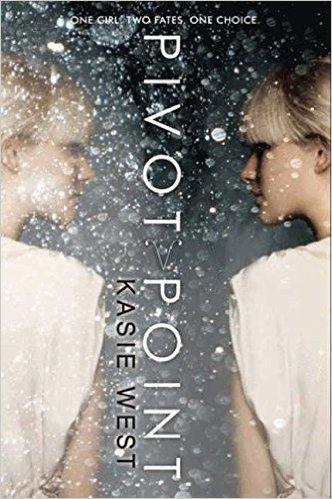
Pivot Point and its sequel Split Second by Kasie West is hands down one of my favorites duos ever. And yet most have not heard of it or read it. This is a travesty. I had this in my 5th grade library and in my 7th, it is slightly mature for 5th graders but completely fine for 7th. I still keep hoping that Kasie West will write a third book although she has said she won’t.
From Amazon:
Addison Coleman’s life is one big “What if?” As a Searcher, a special type of clairvoyant, whenever Addie is faced with a choice, she is able to look into the future and see both outcomes. So when her parents tell her they are getting a divorce and she has to pick who she wants to live with, a Search has never been more important.
In one future Addie is living with her mom in the life she’s always known and is being pursued by the most popular guy in school. In the other she is the new girl in school, where she falls for a cute, quiet artist. Then Addie finds herself drawn into a murder investigation, and her fate takes a darker turn. With so much to lose in either future, Addie must decide which reality she’s willing to live through . . . and who she’s willing to live without.
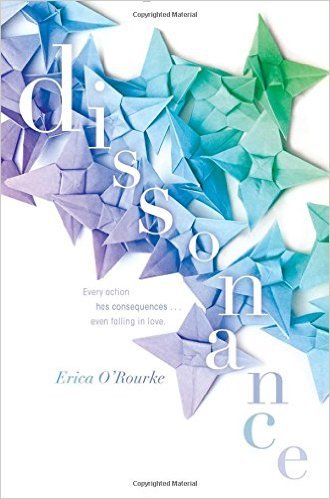
The Dissonance series by Erica O’Rourke is another often overlooked series that I absolutely love. Two books are out in the series at the moment but the battle is only getting bigger and better in the books. This is also fine for mature 5th grade readers and up.
From Amazon:
Every time someone makes a choice, a new, parallel world is spun off the existing one. Eating breakfast or skipping it, turning left instead of right, sneaking out instead of staying in bed—all of these choices create alternate universes in which echo selves take the roads not traveled. Del knows this because she’s a Walker, someone who can navigate between the worlds, and whose job is to keep the dimensions in harmony.
But Del’s decisions have consequences too. Even though she’s forbidden from Walking after a training session goes horribly wrong, she secretly starts to investigate other dissonant worlds. She’s particularly intrigued by the echo versions of Simon Lane, a guy who won’t give her the time of day in the main world, but whose alternate selves are uniquely interested. But falling for Simon draws Del closer to a truth that the Council of Walkers is trying to hide—a secret that threatens the fate of the entire multiverse.
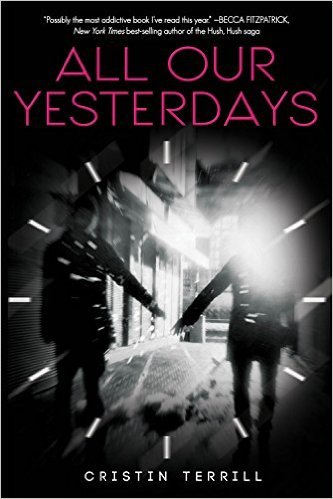
All Our Yesterday’s by Cristin Terrill is not a series, but it should be. This book took my breath away when I read it and have found an appreciative audience with my 7th graders as well. This is a page turner.
From Amazon:
Imprisoned in the heart of a secret military base, Em has nothing except the voice of the boy in the cell next door and the list of instructions she finds taped inside the drain.
Only Em can complete the final instruction. She’s tried everything to prevent the creation of a time machine that will tear the world apart. She holds the proof: a list she has never seen before, written in her own hand. Each failed attempt in the past has led her to the same terrible present- imprisoned and tortured by a sadistic man called the doctor while war rages outside.
Marina has loved her best friend, James, since they were children. A gorgeous, introverted science prodigy from one of America’s most famous families, James finally seems to be seeing Marina in a new way, too. But on one disastrous night, James’s life crumbles apart, and with it, Marina’s hopes for their future. Marina will protect James, no matter what. Even if it means opening her eyes to a truth so terrible that she may not survive it . . . at least, not as the girl she once was. Em and Marina are in a race against time only one of them can win.
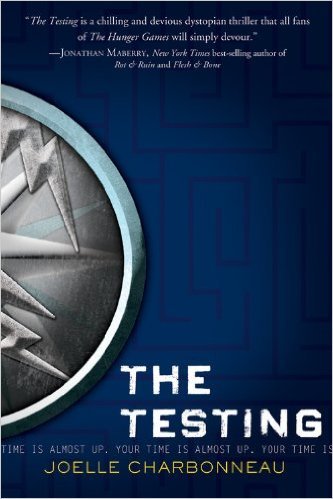
Joelle Charbonneau knows how to write a great book, her new book Need is a must add to any 7th grade classroom, but I first fell in love with her writing by reading The Testing series. This is also fine for mature 5th graders and up (Need probably is not).
From Amazon:
It’s graduation day for sixteen-year-old Malencia Vale, and the entire Five Lakes Colony (the former Great Lakes) is celebrating. All Cia can think about—hope for—is whether she’ll be chosen for The Testing, a United Commonwealth program that selects the best and brightest new graduates to become possible leaders of the slowly revitalizing post-war civilization. When Cia is chosen, her father finally tells her about his own nightmarish half-memories of The Testing. Armed with his dire warnings (”Cia, trust no one”), she bravely heads off to Tosu City, far away from friends and family, perhaps forever. Danger, romance—and sheer terror—await.
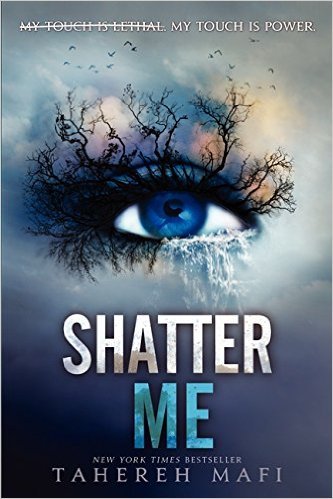
The Shattered series by Tahereh Mafi is another great contender for post Hunger Games reading. There certainly are similarities between the series but it still has a unique concept revolving around the main character.
From Amazon:
I have a curse.
I have a gift.
I’m a monster.
I’m more than human.
My touch is lethal.
My touch is power.
I am their weapon.
I will fight back.
No one knows why Juliette’s touch is fatal, but The Reestablishment has plans for her. Plans to use her as a weapon. But Juliette has plans of her own. After a lifetime without freedom, she’s finally discovering a strength to fight back for the very first time—and to find a future with the one boy she thought she’d lost forever.
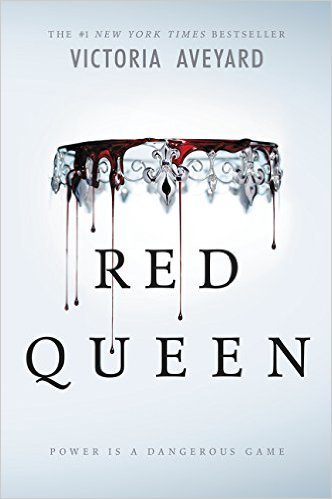
I have been gushing about Red Queen by Victoria Aveyard to anyone who will listen. Yes, it reminds me of so many other books but at the same time it is so good. So good. I was thrilled to put this into the hands of my 7th graders this week. Only drawback is that this is the only book out so far.
From Amazon:
Mare Barrow’s world is divided by blood–those with common, Red blood serve the Silver- blooded elite, who are gifted with superhuman abilities. Mare is a Red, scraping by as a thief in a poor, rural village, until a twist of fate throws her in front of the Silver court. Before the king, princes, and all the nobles, she discovers she has an ability of her own.
To cover up this impossibility, the king forces her to play the role of a lost Silver princess and betroths her to one of his own sons. As Mare is drawn further into the Silver world, she risks everything and uses her new position to help the Scarlet Guard–a growing Red rebellion–even as her heart tugs her in an impossible direction. One wrong move can lead to her death, but in the dangerous game she plays, the only certainty is betrayal.

I don’t think it is possible to have a post like this without mentioning the Legend series by Marie Lu. Yes, many have already read it and passed it on but there are still so many that haven’t. This is also a great entry book into science fiction for students who might not think the genre is for them.
From Amazon:
What was once the western United States is now home to the Republic, a nation perpetually at war with its neighbors. Born into an elite family in one of the Republic’s wealthiest districts, fifteen-year-old June is a prodigy being groomed for success in the Republic’s highest military circles. Born into the slums, fifteen-year-old Day is the country’s most wanted criminal. But his motives may not be as malicious as they seem.
From very different worlds, June and Day have no reason to cross paths – until the day June’s brother, Metias, is murdered and Day becomes the prime suspect. Caught in the ultimate game of cat and mouse, Day is in a race for his family’s survival, while June seeks to avenge Metias’s death. But in a shocking turn of events, the two uncover the truth of what has really brought them together, and the sinister lengths their country will go to keep its secrets.

The Lunar Chronicles series by Marissa Meyer, Cinder is the first book shown here, is so loved in our classroom that I have had to repurchase it a few times. And yes, we are counting down to November 15th when Winter comes out. This book is equally loved by 5th and 7th graders and is just one of those series where you want to read the whole thing in one sitting.
From Amazon:
Humans and androids crowd the raucous streets of New Beijing. A deadly plague ravages the population. From space, a ruthless lunar people watch, waiting to make their move. No one knows that Earth’s fate hinges on one girl. . . .
Cinder, a gifted mechanic, is a cyborg. She’s a second-class citizen with a mysterious past, reviled by her stepmother and blamed for her stepsister’s illness. But when her life becomes intertwined with the handsome Prince Kai’s, she suddenly finds herself at the center of an intergalactic struggle, and a forbidden attraction. Caught between duty and freedom, loyalty and betrayal, she must uncover secrets about her past in order to protect her world’s future.

Another modern day classic series is the Unwind series by Neal Shusterman. I first discovered this last year and had students use it in a book club, it was amazing.
From Amazon:
In America after the Second Civil War, the Pro-Choice and Pro-Life armies came to an agreement: The Bill of Life states that human life may not be touched from the moment of conception until a child reaches the age of thirteen. Between the ages of thirteen and eighteen, however, a parent may choose to retroactively get rid of a child through a process called “unwinding.” Unwinding ensures that the child’s life doesn’t “technically” end by transplanting all the organs in the child’s body to various recipients. Now a common and accepted practice in society, troublesome or unwanted teens are able to easily be unwound.
With breathtaking suspense, this book follows three teens who all become runaway Unwinds: Connor, a rebel whose parents have ordered his unwinding; Risa, a ward of the state who is to be unwound due to cost-cutting; and Lev, his parents’ tenth child whose unwinding has been planned since birth as a religious tithing. As their paths intersect and lives hang in the balance, Shusterman examines complex moral issues that will keep readers turning the pages until the very end.

Of course, a list like this would be woefully incomplete if it weren’t for The Maze Runner by James Dashner. I don’t know if I even need to say much about this series except that I will never forget the 5th grader that told me to read it. Thank you so much.
From Amazon:
If you ain’t scared, you ain’t human.
When Thomas wakes up in the lift, the only thing he can remember is his name. He’s surrounded by strangers—boys whose memories are also gone.
Nice to meet ya, shank. Welcome to the Glade.
Outside the towering stone walls that surround the Glade is a limitless, ever-changing maze. It’s the only way out—and no one’s ever made it through alive.
Everything is going to change.
Then a girl arrives. The first girl ever. And the message she delivers is terrifying.
Remember. Survive. Run.
If you like what you read here, consider reading my book Passionate Learners – How to Engage and Empower Your Students. The 2nd edition and actual book-book (not just e-book!) comes out September 22nd from Routledge, but rumor has it that it is out on Kindle already!
Filed under: being a teacher, books, Literacy












